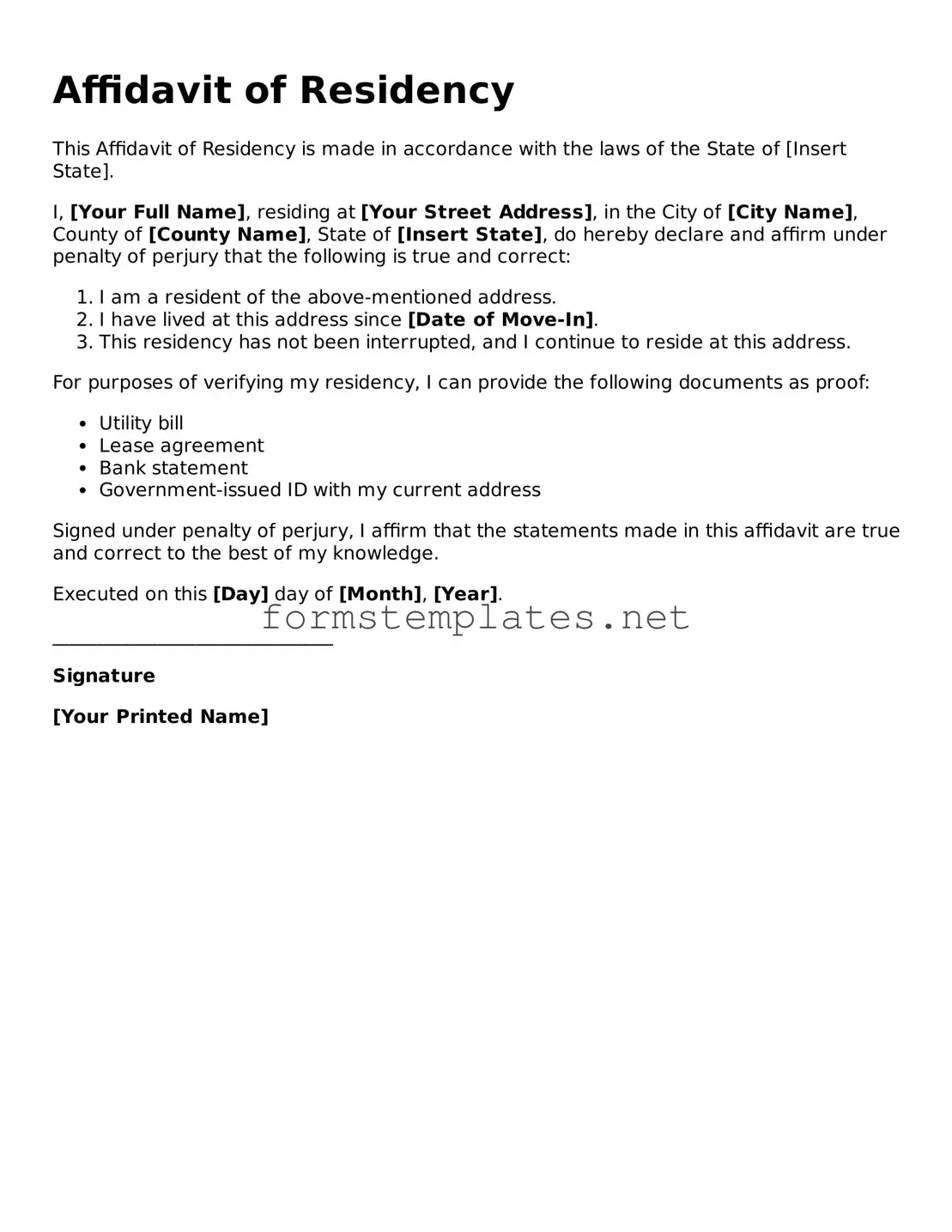Affidavit of Residency
This Affidavit of Residency is made in accordance with the laws of the State of [Insert State].
I, [Your Full Name], residing at [Your Street Address], in the City of [City Name], County of [County Name], State of [Insert State], do hereby declare and affirm under penalty of perjury that the following is true and correct:
- I am a resident of the above-mentioned address.
- I have lived at this address since [Date of Move-In].
- This residency has not been interrupted, and I continue to reside at this address.
For purposes of verifying my residency, I can provide the following documents as proof:
- Utility bill
- Lease agreement
- Bank statement
- Government-issued ID with my current address
Signed under penalty of perjury, I affirm that the statements made in this affidavit are true and correct to the best of my knowledge.
Executed on this [Day] day of [Month], [Year].
______________________________
Signature
[Your Printed Name]
